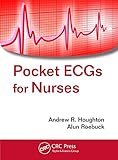Pocket ECGs for Nurses.
Material type: TextPublication details: Boca Raton : CRC Press, 2016.Description: 1 online resource (256 pages) ill 14 cmContent type:
TextPublication details: Boca Raton : CRC Press, 2016.Description: 1 online resource (256 pages) ill 14 cmContent type: - text
- computer
- online resource
- 9781498705943
- 1498705944
- RC683.5.E5 .H68 2016
| Item type | Current library | Collection | Call number | Status | Date due | Barcode | Course reserves | |
|---|---|---|---|---|---|---|---|---|
 Books
Books
|
Main library Nursing Buliding Reference | Reference | RC683.5.E5 .H68 2016 (Browse shelf(Opens below)) | Available | N5483 |
Appendix B: Help with the next editionBack Cover.
Includes bibliographical references and index.
Front Cover; Contents; Preface; Acknowledgements; 1. The basics of the heartbeat; 2. The basics of the ECG; 3. How to record a 12-lead ECG; 4. How to read a 12-lead ECG; 5. Heart rate: Bradycardia and tachycardia; 6. An approach to heart rhythms; 7. Supraventricular rhythms; 8. Ventricular rhythms; 9. Conduction problems and types of block; 10. QRS complexes and left ventricular hypertrophy; 11. ST segment elevation and depression; 12. T wave changes; 13. QT interval prolongation; 14. Bedside and ambulatory monitoring; 15. Summary of key points; Appendix A: ECG resources.
"The ECG is one of the most commonly used investigations in contemporary medicine. Interpretation of the ECG can appear daunting, but it is actually relatively straightforward as long as a systematic approach is taken. Pocket ECGs for Nurses assists with this task by providing a detailed yet readable introduction to ECG interpretation, supplemented by clinical information about how to act based on its findings. The book begins by covering the basics of cardiac anatomy and physiology and how these relate to the ECG. It then guides nurses on how to perform a high-quality ECG recording, interpret it and make sense of common ECG abnormalities. The book also includes a guide to ambulatory and bedside monitoring as well as useful chapter summaries. This pocketbook is an essential reference for the non-specialist who needs to be able to record and perform a basic and safe interpretation of an ECG. Written in plain language with clear explanations, bullet lists and summaries throughout, this handy guide will benefit nurses as well as paramedics and other allied health professionals in recording and reading ECGs"-- Back cover.
Print version record.
There are no comments on this title.

